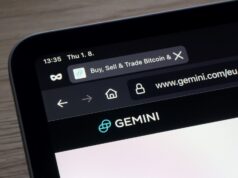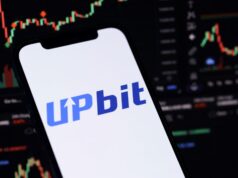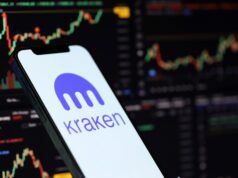Uniswap just made DeFi history when the decentralized exchange (DEX) surpassed $3 trillion in total trading volume. It is now the first protocol of its kind to reach that milestone. But beyond the staggering figure lies a deeper story that speaks volumes about the evolution of decentralized finance, the maturity of crypto infrastructure, and the shifting power dynamics between centralized and decentralized platforms.
From ETH Hackathon to DeFi Powerhouse
Launched in 2018 as a modest project during an Ethereum hackathon, Uniswap introduced the concept of automated market making (AMM). It allowed users to swap tokens without relying on order books or centralized intermediaries. The model did not just revolutionize how trading happens on-chain; it laid the foundation for an entire ecosystem of permissionless financial applications.
Fast forward to 2025, and Uniswap has processed more than $3 trillion in trading volume across its core Ethereum deployment and scaling solutions like Arbitrum, Optimism, and BNB Chain. It generates nearly $4 billion in cumulative fees, ranking among the most revenue-generating crypto protocols, outperforming some centralized exchanges.
Why This Milestone Matters for Uniswap and DeFi
1. It Confirms Product-Market Fit for DeFi
Uniswap’s growth wasn’t driven by hype alone. It reflects sustained user demand for decentralized, non-custodial trading platforms. Even during bear markets, Uniswap maintained its position as the go-to decentralized exchange for liquidity providers and traders. Hitting $3 trillion in volume confirms that DeFi isn’t just a fringe experiment — it’s infrastructure people actually use.
2. A Vote of Confidence in On-Chain Finance
As regulatory scrutiny intensifies over centralized exchanges (CEXs), many traders are looking for alternatives that offer transparency, self-custody, and composability. Uniswap fits that bill. This volume milestone shows decentralized platforms are resilient and ready to scale, offering institutional-grade infrastructure without compromising user control.
3. Catalyst for Institutional Interest
The milestone may further attract institutional investors exploring DeFi as an asset class or infrastructure layer. With tokenized assets, on-chain liquidity, and compliant front-ends now under active development, Uniswap’s proven traction makes it a compelling gateway to DeFi for traditional players.
What’s Next? $10 Trillion, Says the Founder
In a series of posts celebrating the milestone, Uniswap founder Hayden Adams called the achievement “surreal” but emphasized that it’s not the finish line. “Next stop is $10 trillion,” Adams said. His vision includes expanding accessibility, increasing protocol efficiency, and strengthening Uniswap’s multichain presence.
To support these ambitions, the protocol has evolved rapidly. Its most recent iteration, Uniswap v4, introduces “hooks” that allow for advanced trading strategies, dynamic fees, and improved liquidity customization. The Uniswap Foundation, meanwhile, continues to fund public goods and tooling to ensure the protocol remains robust and developer-friendly.
Uniswap A Bellwether for DeFi
Uniswap’s success also comes amid a broader resurgence in DeFi activity. Lending protocols like Aave are posting record volumes, while stablecoins regain traction across chains. As macroeconomic headwinds ease and crypto recovers from regulatory pressure, the sector appears to be entering a new phase of growth, driven less by speculation and more by utility.
>>> Read more: SEC Investigation into Uniswap Concludes Without Action
The $3 trillion milestone, then, is not just a number. It’s a signal: DeFi is here to stay! Decentralization is more than a talking point, and platforms like Uniswap are not just surviving the crypto cycles; they’re defining them.
Readers’ frequently asked questions
What does it mean that Uniswap is a decentralized exchange?
A decentralized exchange (DEX) like Uniswap allows users to trade cryptocurrencies directly from their own wallets without needing to deposit funds on a centralized platform. There’s no company holding your money or processing trades on your behalf. Instead, Uniswap uses smart contracts — pieces of code running on the blockchain — to automatically match buyers and sellers. This model gives users more control over their assets and increases transparency, since all activity is recorded on-chain.
Why is $3 trillion in trading volume important if I don’t use Uniswap myself?
The $3 trillion milestone is important because it proves that decentralized finance is working at scale. Even if you’re not trading on Uniswap, its success shows that blockchain-based services can operate globally without relying on banks, brokers, or centralized exchanges. It helps build trust in DeFi as a legitimate alternative to traditional finance. It may well influence more crypto wallets, services, and apps to integrate with decentralized exchanges like Uniswap, making it easier for you to access crypto tools in the future.
Can I use Uniswap on mobile or without being an expert?
Yes, you can use Uniswap through several user-friendly mobile wallets and browser-based apps like MetaMask, Rainbow, or Coinbase Wallet. These apps often have built-in support for swapping tokens using Uniswap. You don’t need to be a developer, but you do need to understand gas fees, how to protect your private keys, and what tokens you’re trading. Most wallets now guide you through the process step by step, making it accessible even for beginners.
What Is In It For You? Action Items You Might Want to Consider
Explore trading on decentralized exchanges like Uniswap
With Uniswap surpassing $3 trillion in volume, it’s clear that serious liquidity and user activity are happening on-chain. If you’re still relying solely on centralized platforms, this may be the right time to experiment with DEX trading. Try swapping small amounts, understand slippage, and get familiar with gas fee optimization strategies.
Track multichain opportunities
Uniswap’s expansion beyond Ethereum to Arbitrum, Optimism, and BNB Chain means you can access better fees, faster trades, and new token markets depending on the chain. Consider bridging a portion of your portfolio to one of these networks to capitalize on lower transaction costs and emerging DeFi ecosystems.
Position yourself early for Uniswap v4 features
The upcoming Uniswap v4 upgrade will offer new capabilities like “hooks” for advanced trading logic. If you’re a more experienced trader or looking for an edge, keep an eye on how these features are rolled out. Early adopters of new DEX mechanics often benefit from new strategies, LP incentives, or arbitrage opportunities.











[…] >>> Read more: Uniswap Hits $3T – A Big Moment for DeFi […]